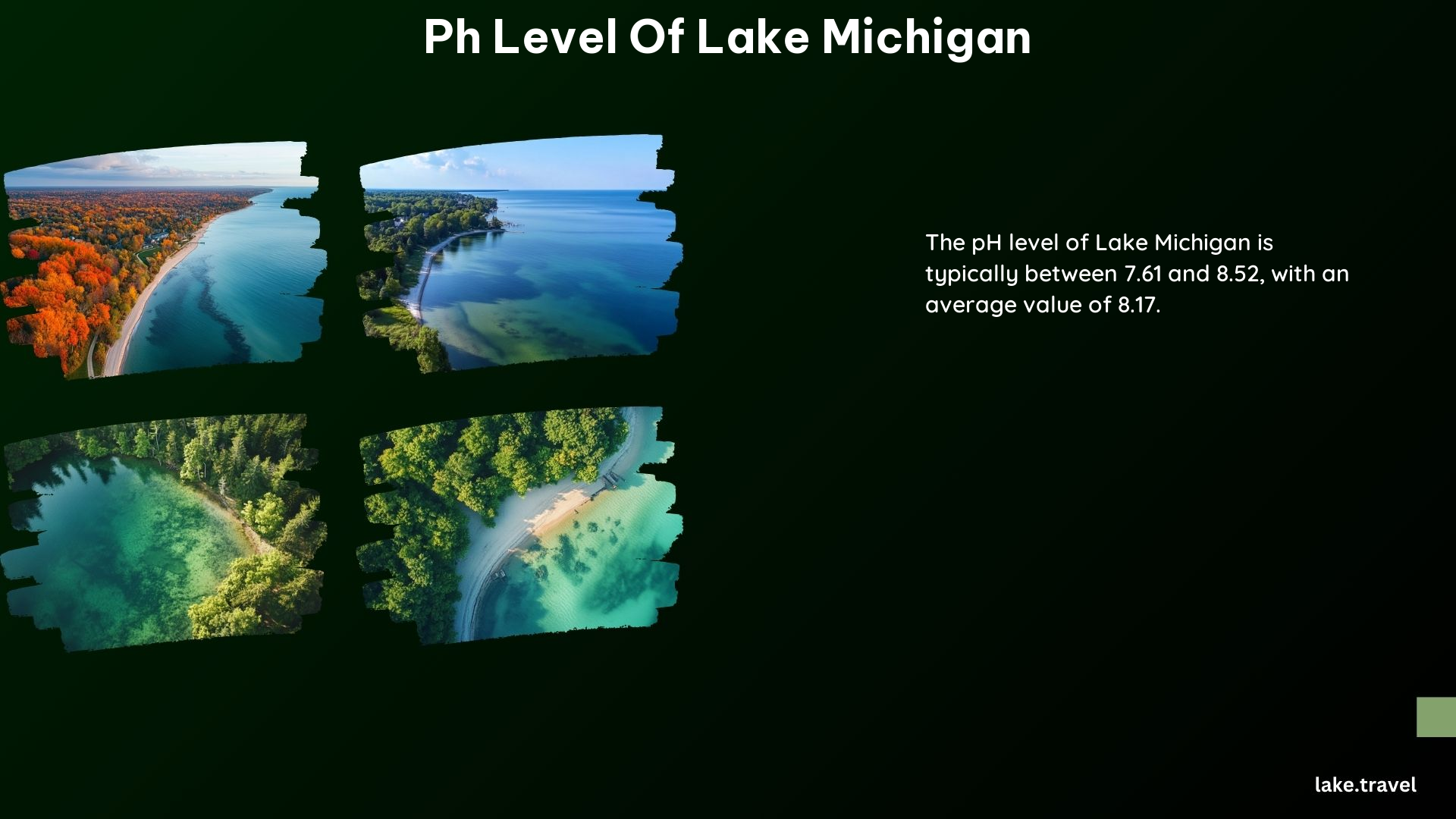The pH level of Lake Michigan is a crucial indicator of the lake’s water quality and its impact on aquatic life. With an average pH of 8.17, the lake’s water falls within the neutral to slightly basic range, which is suitable for most aquatic species.
Typical pH Range of Lake Michigan

The typical pH range of Lake Michigan’s water is between 7.61 and 8.52. This range is considered optimal for the majority of aquatic life that inhabits the lake.
| Parameter | Range |
|---|---|
| pH | 7.61 – 8.52 |
| Average pH | 8.17 |
Impact of pH on Aquatic Life

The pH level of Lake Michigan has a significant impact on the aquatic life that calls the lake home. Most animal species cannot survive in water that is too acidic (below 5.0) or too basic (above 9.0). The optimal pH range for many species is between 7.0 and 9.0.
For example, bass and bluegill thrive at a pH of 8.5, while trout and mayflies prefer a neutral pH of 7.0. The pH level of the lake can affect the growth, reproduction, and overall health of these aquatic organisms.
Effect of Acid Rain on Lake Michigan
Lake Michigan is protected from the effects of acid rain by its limestone bedrock, which acts as a buffer to neutralize the acidity. However, if the lake were to receive a significant amount of acid rain, its pH values could drop as low as 4, making the water more acidic and potentially harmful to aquatic life.
Monitoring and Assessment of Lake Michigan’s pH
The Illinois Environmental Protection Agency (IEPA) conducts regular water quality monitoring of Lake Michigan, including pH levels, as part of its Lake Michigan Monitoring Program (LMMP). This program includes near-shore, harbor, and public water supply monitoring components to assess the overall water quality of the lake.
Seasonal Variations in pH Levels
Research has shown that Lake Michigan’s pH levels can vary seasonally. A study found that pH levels were higher in spring than in summer, indicating a seasonal trend in the lake’s water chemistry. Understanding these seasonal fluctuations is important for monitoring the lake’s overall water quality and its impact on aquatic life.
Key Data and Statistics
Here are some specific data points related to the pH levels of Lake Michigan:
- Average pH: 8.17 (range: 7.61-8.52)
- pH levels in spring: higher than in summer
- pH levels in Lake Michigan: generally between 6.5 and 8.5
By understanding the pH level of Lake Michigan, researchers, policymakers, and the public can better assess the overall health of the lake and take appropriate measures to protect this valuable natural resource.
References:
1. Minor, E. C., & Brinkley, G. (2022). Alkalinity, pH, and pCO2 in the Laurentian Great Lakes: An initial view of seasonal and inter-annual trends. ScienceDirect.
2. Illinois Environmental Protection Agency. (n.d.). Lake Michigan – Illinois Environmental Protection Agency.
3. International Lake Environment Committee. (n.d.). Lake Michigan.
4. Michigan Sea Grant. (n.d.). Measuring pH | Teaching Great Lakes Science – Michigan Sea Grant.
5. City of Grand Rapids. (2019). Average Water Analysis Calendar Year 2018 Lake Michigan Filtration Plant.
